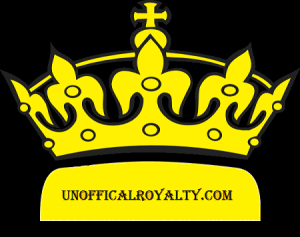The Coronation events are not over as King Charles III and Queen Camilla will be presented with the Honours of Scotland in Edinburgh on 5 July. However, there might be a big difference between this ceremony and the Coronation. While there was never any question of St. Edward’s Crown being placed on King Charles III’s head on May 6th at Westminster Abbey, the Crown of Scotland will, most likely, stay attached to the cushion it’s presented on.
The Crown of Scotland is a part of The Honours of Scotland which is known as the oldest regalia in the British Isles. The crown as it’s presented today was refashioned from a damaged, lighter crown in 1540 for James V. James wore it to his consort’s coronation that same year at the Abbey Church of Holyrood.
The circlet at the base is made from Scottish gold and is encrusted with 22 gemstones and 20 precious stones from the previous crown. Freshwater pearls from Scotland’s rivers add to the design. It weighs, in total, 1.64 kilograms. The four arches are from the last crown and are brought together by a cross.
In 1603 with the death of the childless Elizabeth I, the English crown was passed to her cousin, King James VI of Scotland. He became King James I of England. Since then, England and Scotland have shared the same monarch. Many Scots supported James but it was the English who didn’t think the quick union would be a smart move.
James had already been crowned King of Scotland by the time he took the English throne but when he died, in 1625, his son and successor, Charles I, had a Coronation in England first. He was crowned at Westminster Abbey in 1626 but took his time getting to Scotland to be crowned there with the ceremony only taking place in 1633.
In 1649, Charles I, lost his throne and his head in the English Civil War. The English Crown Jewels were dismantled with some parts sold and others melted down. Meanwhile, the dead king’s son, Charles, was in Scotland trying to establish a power base there. Charles II was crowned at Scone Abbey in 1651 but had to flee into exile soon afterwards. Oliver Cromwell, now Lord Protector, had his eye on the Honours of Scotland and so, in 1651, they were hidden and they didn’t emerge again until the Restoration of the Monarchy under Charles II.
Just over half a century later, the 1707 Act of Union between England and Scotland changed everything. The Honours of Scotland were seen as redundant and the regalia was locked in a chest and sealed away. That chest would not be rediscovered until 1818. Since the union, it’s never been used in a Coronation. Instead, it is kept on a cushion and looked at, or symbolically touched.
When Queen Elizabeth II arrived in Edinburgh in 1953, she didn’t wear the Crown of Scotland despite some debate about whether she should. Instead, she came out for a procession around the capital in normal clothes. without any regalia or robes. As for the Scottish Crown, it was left on a plinth in Edinburgh Castle. This is because it was decided that Her Majesty should not be crowned with it during her Scottish Coronation.
However, it became the first Crown to be placed on her coffin, seventy years later. When Elizabeth, the first Queen of Scots of that name, died in Balmoral, her body lay in state at St. Giles’ Cathedral, Edinburgh, with the Crown of Scotland on top of it.
Now, debate turns to whether her successor, the third King Charles, will wear the crown. It seems likely that he will follow the pattern set since the early 19th century and the reign of King George IV and be in the presence of the Crown of Scotland as he accepts the Honours at St. Giles’ Cathedral on July 5th.
When not in use, the Honours of Scotland are on display at Edinburgh Castle.

